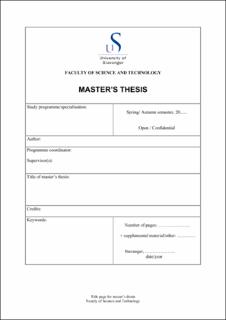| dc.contributor.advisor | Setty, Vinay | |
| dc.contributor.author | Fjellheim, Markus | |
| dc.date.accessioned | 2020-09-27T18:15:48Z | |
| dc.date.available | 2020-09-27T18:15:48Z | |
| dc.date.issued | 2020-07-15 | |
| dc.identifier.uri | https://hdl.handle.net/11250/2679784 | |
| dc.description | Master's thesis in Computer science | en_US |
| dc.description.abstract | Space-crafts and their instruments tend to collect way more data on their missions than what can be transmitted back to earth in a timely manner. This leads to the need to prioritize what data is to be downloaded and what is not. This writing focuses on automatic caption generation of images from the surface of Mars taken by rovers that are sent to Earth as a way to save bandwidth and making the images searchable.
The high latency and low bandwidth between Earth and spacecrafts complicates communication. High latency makes it difficult to control the crafts as you don't see the results before hours later. The low bandwidth does not help either as downloading data from the crafts takes a long time. As an example, if you want to download the music video of the song "Never Gonna Give You Up" by Rick Astley, it would take about 3.17 hours. Had it not been for the bandwidth limitation, almost all the surface of Mars would already have been photographed by the Mars orbiter, but as of now, only 3% is. It is therefore important to be able to choose what images to download and which images to not. Currently, the methods used to decide on what images are of interest is by downloading thumbnail versions of the images and/or highly compressed versions used to make decisions as to whether the image is of interest. Another method is to use pixel value difference between the images to prevent identical or too similar images from being downloaded. Future Mars missions might have modern radiation safe GPUs on board, like the Snapdragon 820/855, for the purpose of data analysis. This will allow for some of the data analysis to be done on board the rover without the need to transfer the data back to Earth, only the abstracted features. This allows for better determining similarity between images and decisions to what images are worth spending the valuable bandwidth on. Machine learning capabilities and machine vision also increase opportunities for autonomic control of the rover. Automatic caption generation of geological features in the images allow geologists on Earth to search for geological features and choose the images of interest based on the captions. | en_US |
| dc.language.iso | eng | en_US |
| dc.publisher | University of Stavanger, Norway | en_US |
| dc.relation.ispartofseries | Masteroppgave/UIS-TN-IDE/2020;; | |
| dc.subject | informasjonsteknologi | en_US |
| dc.subject | Mars | en_US |
| dc.subject | geology | en_US |
| dc.subject | machine learning | en_US |
| dc.subject | caption generation | en_US |
| dc.subject | maskinlæring | en_US |
| dc.title | Analyse og presentasjon av Mars rover data | en_US |
| dc.type | Master thesis | en_US |
| dc.subject.nsi | VDP::Teknologi: 500::Informasjons- og kommunikasjonsteknologi: 550 | en_US |
| dc.source.pagenumber | 77 | en_US |
